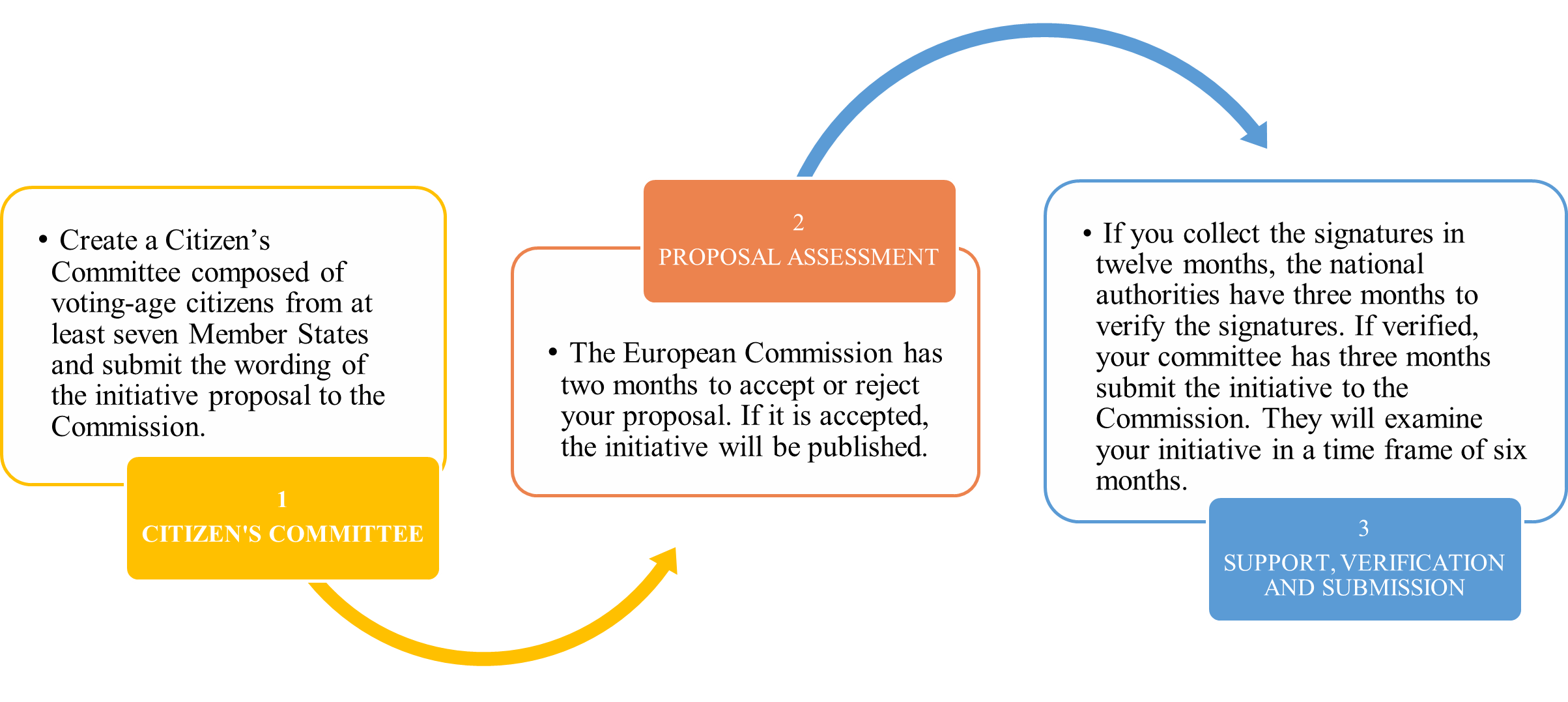
What is ECI?
The European Citizens’ Initiative (ECI) is an EU policy innovation initiative which aims to increase democratic legitimacy by giving the opportunity to European citizens to propose legislation to influence issues affecting all Member States. The Treaty of Lisbon introduced the European Citizen’s Initiative for the first time. It is currently supervised by the European Commission, and it follows a multi-level procedure including the formation of a citizen’s committee.
What you will need to make a proposal…
- one million signatures from at least seven EU countries;
- a concern and area of competence of the European Commission;
- a matter for which it is necessary a legal act of the Union for implementing the Treaties.
How does it work?


What is PADIGE’s role?
PADIGE is the project which tries to spread the word and inform about ECI. This project promotes ECI by developing a platform that will involve young people and NEETs in the decision-making process, allow them to promote their ideas and get in contact with peers that share them.
PARTICIPATORY DESIGN
Participatory design (co-design) is an approach to create ‘products’ (for example, initiatives, project, strategies) by actively involving all stakeholders in the creation process. It is a strategy to democratize the process of design to everyone who is part of the process. Thus, it helps to ensure that the ‘product’ meets the needs of stakeholders, is genuinely user-centered and can lead to successful outcomes.
Using participatory design to create an ECI proposal
1. The stakeholder mapping
Before starting to develop an idea in depth, you need to identify who the individuals interested in your process and results (stakeholders) could be. Stakeholder mapping is the visual process of laying out all the stakeholders of a product, project or idea on a single map so you can clearly see the level of importance, influence, power you must give them in your project. Once you have this, you can develop a plan of how you will engage and monitor them.
2. The problem
To solve a problem, you need to know the problem. How to define it?
- Explore the situation: what it is, the impact, consequences if not solved, influence on people…
- Explain: visualize it, make it tangible by writing it down in a simple and short statement.
- Check the problem: sometimes problems arise from deeper problems, and so on. Try to identify the source problem by asking questions.
3. Co-design a solution
Users and stakeholder collaborate as experts. Organizations, during this step, should know that there is more than one expert, everyone can listen, and everyone can be creative.
Where and how does this co-design take place?
In a workshop you first inform your stakeholders (what is the problem? How can they help?). Then, you design the workshop: find someone who acts as moderator and start the workshop. Finally, it’s the turn of providing feedback and taking action: we care about the input of stakeholders.
How is a proposal registered?
- Designate a group of organizers and contact person.
- Your proposal initiative must fit in the framework of the Commission’s powers.
- The initiative cannot frivolous, abusive or vexatious.
- The initiative cannot be contrary to EU values.
What structure should a proposal have?
- Title
- Subtitle
- Background
- Objectives
- Proposed Measures
Helpful resources
- In the European Citizen’s Initiative website you will find more information about the initiative, how it works, related news and material you can use to spread the word.
- The Citizens Initiative Forum is the platform in which you can discuss matters that you are interested in, find partners, join an initiative, get legal advice in formulating the text and help in your campaign for the selection of signatures, or listen to testimonies of European citizens who have led an initiative.
- Read more about the signature collection systems you can use to get the support you need for the submission of your initiative.
